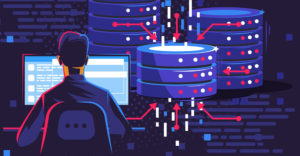
When collaborating with others in the workplace, physically being there is nice. The fact is, though, that one’s physical presence almost always leaves an unavoidable carbon footprint — one that companies focused on going green might want to erase.
As an answer to this dilemma, new and emerging collaborative technologies offer a way to be there in spirit, voice and mind, without having to hop on a plane, take a cab, or print out a document. These technologies are one way that companies can make themselves greener — limiting the time, money, and carbon output of travel, commuting, sharing, talking and creating.
Meeting Up
Online and mobile platform meetings are increasingly becoming the norm in the business world. Offerings like Citrix Online’s GoToMeeting, which was launched in 2004 and has since captured a large share of the online meeting space, offer Web-conferencing, demonstration and collaboration capabilities to those who want to work with colleagues around the world.
“We disrupted the Web-conferencing market with a product that is incredibly simple and easy to use, yet delivered high performance at an affordable price,” Citrix Online Vice President Bernardo de Albergaria, general manager, collaboration, told TechNewsWorld. “Businesses of any size are able to quickly adopt, use and benefit from a truly powerful online meeting experience.”
GoToMeeting is a quick and secure way to attend small online meetings for up to 25 attendees. It lowers the environmental impact of meetings by reducing the necessity of travel, and it also lowers operational costs, while potentially increasing sales and productivity.
“By being able to participate in meetings remotely through GoToMeeting, the need for travel and commuting is greatly reduced, providing valuable and responsible environmental advantages,” explained de Albergaria. “These include the preserving of natural resources through a significant reduction in greenhouse gas emissions.”
Online meeting and collaboration services also allow more employees to work remotely or at home, or what Citrix Online calls “workshifting.” If 40 percent of Americans worked from home half time, it would reduce greenhouse gas emissions by about 5 million tons — or the equivalent of taking over 9.6 million cars off the road for one year, according to Citrix Online’s report, “Workshifting Benefits: The Bottom Line.”
The company practices what it preaches, doing its part to lessen its carbon footprint in a variety of ways.
“Our employees use our products daily to reduce their travel and lower their impact on the planet,” said de Albergaria. “About one-third of our workforce is virtual, which has not only helped increase productivity and driven our growth, but has also contributed to environmental benefits.”
The Paperless Office: Are We There Yet?
It’s been a dream for the last decade: the paperless office. Increasingly, though, this dream is becoming a nuts-and-bolts daily reality, saving not just paper but the energy it takes to print, ship and share paper documents. Collaborative file-sharing options are another way that offices can save the planet and save money at the same time.
It can be as easy as using Google Docs to share drafts of memos or reports, or as complex has building an entire office around the principle of sharing all files and data electronically.
Companies like Smart Solutions, for instance, offer document and email management, knowledge management, portals and document collaboration.
“[We] reduce the creation, storage and transmittal of physical paper documents in document-intensive organizations,” Rajiv Mukerji, Smart Solutions’ director of collaborative technology solutions, explained to TechNewsWorld.
Smart Solutions works with education, professional services, and other industries to manage information in electronic form. In some cases, the dream of a paperless office — in offices that once were drowning in paper — has become a reality.
“Many law firms have done away with large file rooms entirely,” said Mukerji.
Into the Cloud
Other services, like Box.net, provide access to cloud-based computing, storage and management services for 5 million users and 60,000 companies, from small businesses to Fortune 500 companies.
“Since Box is cloud-based, content can be accessed from a desktop, laptop, iPad or even a smartphone,” Dan Levin, Box’s chief operating officer, told TechNewsWorld. “The company offers a service that is a secure, low cost and user-friendly alternative to traditional enterprise software solutions.”
Storing information offsite, in short, can make companies greener, and the economies of scale with those offsite data centers potentially saves energy overall.
“Box requires no hardware or infrastructure investments from its customers, allowing businesses to drastically reduce carbon overhead often associated with an on-premises solution,” explained Levin.
Using a service like Box can also facilitate telecommuting and remote working.
“For companies who allow their employees to telecommute, Box is accessible online and via a number of mobile devices,” said Levin. “This means that employees no longer have to struggle with accessing content behind a firewall or trying to remotely log in to a VPN.”
The Future of Collaboration
The fact is, the more virtual the workplace becomes, the more energy it can potentially save.
“Find a way to do more things virtually,” David Coleman, founder of Collaborative Strategies, advises businesses seeking greener territory.
“Knowledge workers — except in specific circumstances — do not always need to physically be at a workplace — they work is where they are,” he observed. “Provide your employees with great tools for collaboration and a consistent environment so that they can work from anywhere. There are lots of green benefits to this.”
Coleman noted there has been a proliferation of new services and sites: mobile apps that allow for on-the-go collaboration, such as FuzeMeeting; augmented reality services like Layar; online community services like those offered by Jive; and virtual team spaces like those available through Huddle, PBWorks and Central Desktop.
“The focus of evolution of these tools is not so much a focus on content and tool features, but more about people and process,” explained Coleman. “Provide your employees with great tools for collaboration and a consistent environment so that they can work from anywhere. There are lots of green benefits to this.”






















































Although the solutions are hardly new, taking the sustainability angle is wise. Perhaps if more were to channel the advantages virtual useage as a sustainable solution it may gain in popularity.
It hasn’t quite registered in the "sexy-sphere" but maybe more articles like this one will make an impact.
Food for thought: Where do you sit on "Sustainability" Hogwash, Greenwash, Brainwash or Lipgloss? http://t.co/i2P6aSs